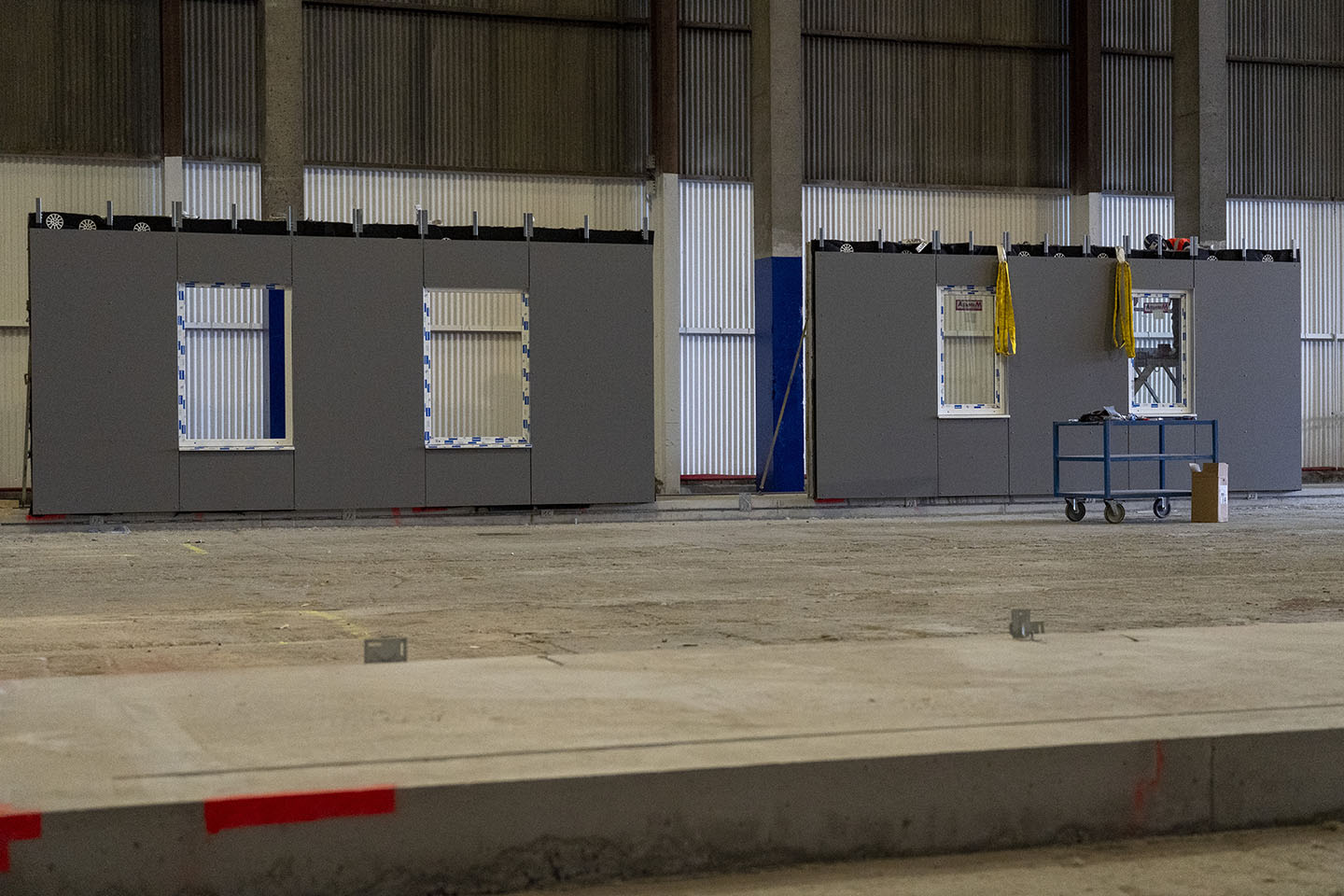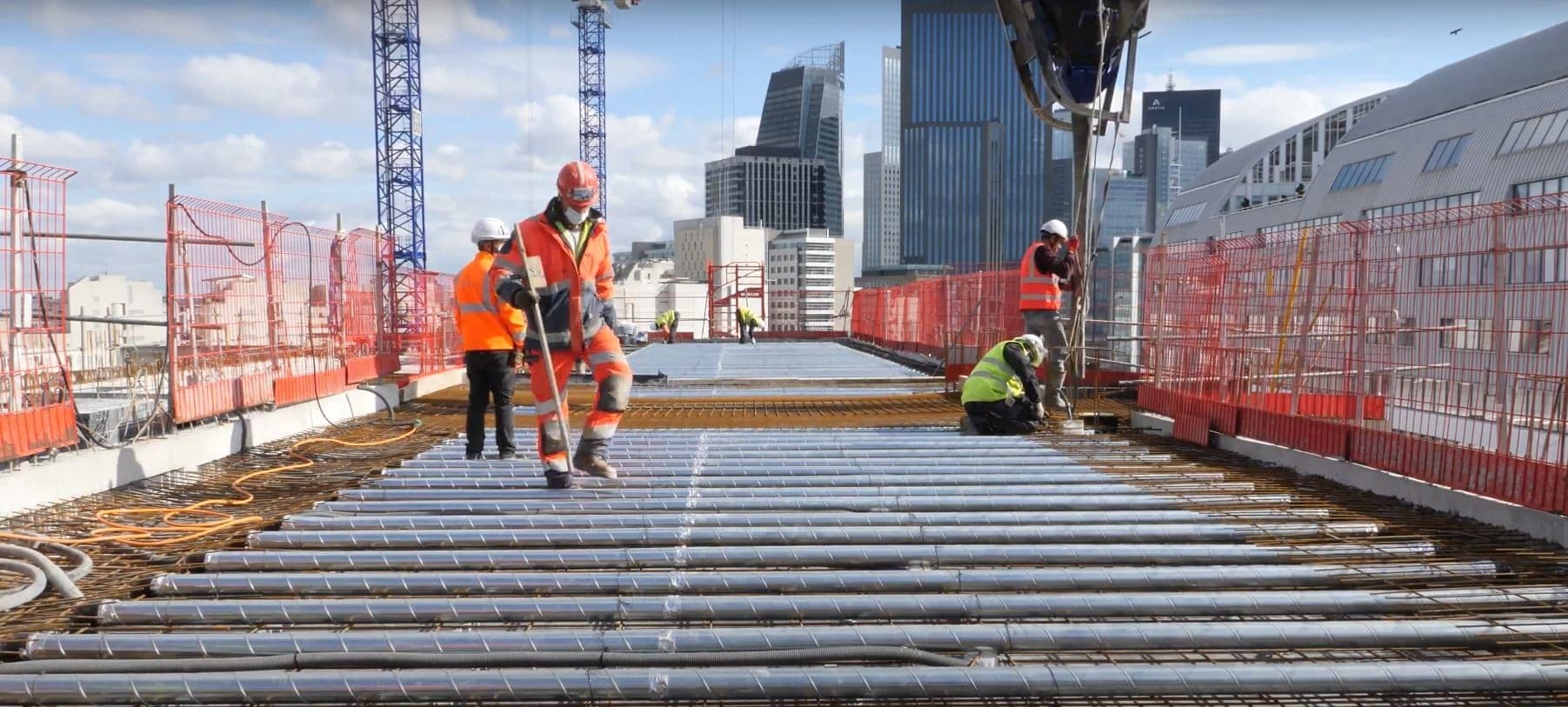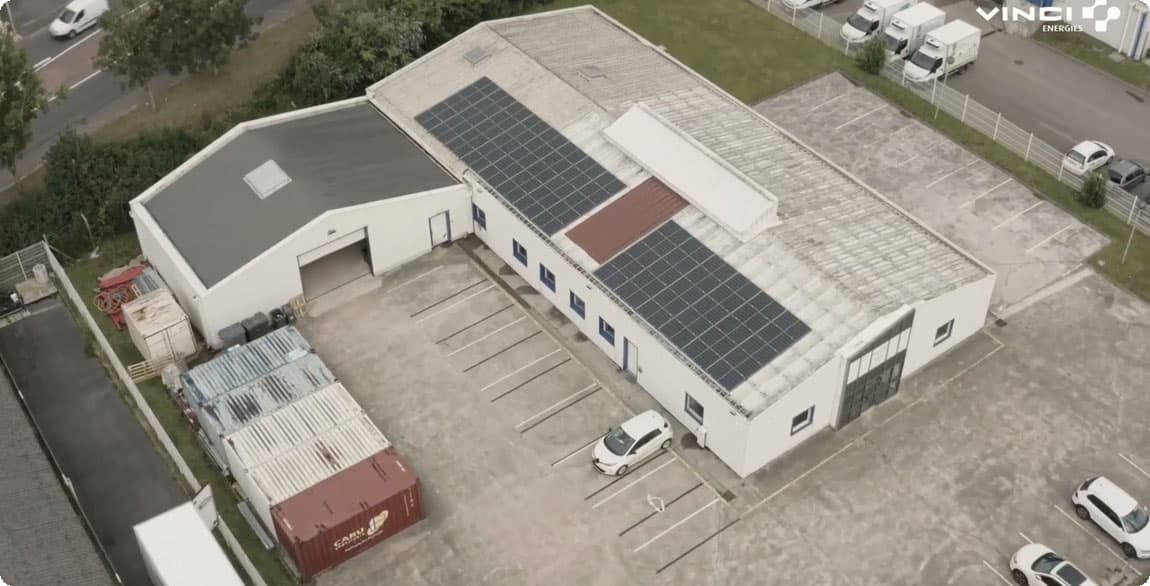
REHASKEEN®, an innovative industrialization product for the massification of energy renovation
Simple, economical, fast and durable, REHASKEEN® makes it possible to industrialise and accelerate the renovation of energy-intensive buildings…

Reduce as much as possible the CO2 emissions from the construction of the high speed lane through a thorough review of the design of the structures, and also develop several CO2 emission absorption projects along the route for an amount equal to the final construction emissions in 2035.
Stretching over a route of approximately 90 km, lots N1 and N2 include a large number of engineering structures, tunnels and earthworks: 51 viaducts and caisson structures totaling over 14 km and 76 overpasses, 7.5 km of twin-tube tunnel, 30 km of linear cut-and-cover, 76 underpasses, 33 km of embankment, 4 motorway crossing structures in caisson structures and 6 interconnections with existing railroads requiring both underpasses and overpasses.
Our vision for the sustainability of this project is that HS2 will provide carbon-free rail travel for a cleaner, greener future.
We are already working towards our goal by reducing carbon emissions and investing further in environmental offsets (landscape, ecological, good surface and groundwater status, no net loss of biodiversity) along the route of the UK high speed line.
We have already achieved a 35% reduction in our carbon footprint in the design phase alone (preliminary design and execution studies). The objective is to reach 50% at the end of the construction phase.
Adaptation to climate change is also considered in this project and the unprecedented challenges and choices we have made during the design phase will affect the operation and maintenance of the newly created line and positively impact current and future generations.
For example, all of our structures are designed to be resilient to climate change.
By providing a cleaner, greener infrastructure for travel between London and Birmingham and in the future to Manchester (in the second phase), HS2 will help reduce the number of cars and trucks on UK roads, drastically reduce demand for domestic flights and contribute substantially to Britain’s efforts to reduce its carbon emissions.
All of this will ultimately support the UK’s transition to carbon neutrality by 2050 while improving air quality in the major cities between London and Manchester.
The line is also triple certified to ISO 14001:2015, ISO 9001:2015; ISO 45001:2018. It is also PAS2080 certified for Carbon and BREEAM (Stage 1) & CEEQUAL (Stage 2) “Excellent” for infrastructure. This is why HS2 is both a catalyst for growth and the most sustainable railroad of its kind in the world.
on which the project has a significant impact
Scope 1 +2 : Through optimisation during the design and construction phase, emissions have been reduced (35% reduction in the project’s carbon footprint compared to the 2016 baseline).
Use of non-polluting energy sources (bio-fuel, solar, electric);
Creation of electric recharging points in the main bases to encourage the use of electric vehicles for the project’s employees.
Quantification :
35% reduction in emissions thanks to the implementation of an eco-design approach (on scopes 1 and 2) detailed below.
Reductions in the quantity of excavation/backfill, as well as reductions in the materials to be used, contribute directly to the reduction in the consumption of machinery.
This represents approximately 30,000tCO2e.
Scope 3 : Reuse of site materials;
Modification of the design: conventional cut-and-cover trenches (Cubbington, Streethay, Bromford Tunnel);
Change in construction methods to minimize the carbon footprint of the structure;
Quantification : 35% reduction in emissions thanks to the implementation of an eco-design approach detailed below.
The reduction in the quantities of materials to be used contributes to the reduction of scope 3 upstream.
This represents approximately 550,000tCO2e.
Emissions absorptions : Creation of ecological and landscape compensations;
Proposal of nature-based solutions; construction of an ecological corridor along the new road; transplantation of hedges;
Activities in favor of positive Biodiversity (Net gain).
Avoided emissions : The avoided emissions are linked to the modal shift of traffic induced by this new high-speed line.
The main emissions savings were identified during the design phase (preliminary design and implementation study), taking a global view of the project and not on a project by project basis. The CO2e savings are measured against the 2016 baseline project. Here are some emblematic examples of this project reengineering:
– Bromford Tunnel Extension: The change in alignment in the Bromford area resulted in the replacement of 15 earth and civil engineering structures with the 3 km Bromford Tunnel Extension, saving approximately 40,000 tCO2e
– Canley Brook Retaining Wall: The removal of the Canley Brook retaining wall was enabled with the lengthening of the Kenilworth Cutting and Crackley Road cuttings, reducing the footprint by approximately 40,000 tCO2e.
– Streethay Open Cut: 70,000 m3 less concrete than originally designed During the design of the project, the cut and its associated structures were redesigned, transforming the longest cut in the northern sector into a conventional cut, saving 400,000 t of CO2 emissions.
– M42 Marston Grade separation: Change from a conventional grade separation structure to an asymmetrical jack box. Complete removal of the northern retaining walls, partial removal of the southern retaining walls, removal of the supporting structures. 2230 t CO2e avoided. This solution was repeated on other structures of the same type.
– Handsacre Retaining Walls and Washwood Heath Open Cut: Washwood Heath structure showing significant carbon reduction due to 100 m shorter trench length and 3 m shorter vertical alignment. Handsacre retaining wall removed due to vertical alignment optimizations.31,000 tCO2e carbon savings
– Optimization of earthworks: Blythe byoass fill, Mercote Mill fill, Pool Wood fill, Horn Brook fill. Design changes included optimizing the slope of the cut and fill embankments (e.g., gradient from 1: 2.5 to 1: 2) which reduced the amount of material excavated, and reduced the footprint of earthworks which can have environmental/social/land impacts. The gain is 6,141 tCO2e saved
– Structure SL5, M42 crossing: Excess material (270,000 tons) was transported from the HE / Skanska project and used on the embankments and crane pads of our site. This reduced the amount of imported aggregates and transportation related impacts. Approximately 15,000 tCO2e avoided.
– Harvey’Rough Sheep Leap: Re-designed the structure to eliminate over 300 m of retaining walls, 400 total project piles. Approximately 8,000 tCO2e avoided
– Stoneleigh Retaining Wall: Complete removal of the mainline retaining wall and replacement with a conventional cut with steeper slopes. Significant carbon savings in the construction and operation phase are expected to be approximately 30,000 tCO2e.
– Concentration of lime and cement in the treatment of materials: We have also further reduced the concentration of lime in the backfill from 2% to 1.5%. This will result in the avoidance of approximately 9,000 tCO2e.
Total cost of the project (Phase 1 and 2): 6 billion euros.
01/07/2017
United Kingdom (Birmingham)
Development of an ecological corridor along the route of the new LGV line.
Creation of thousands of jobs during the construction and design phase.
Hiring of work-study students in the railway industry and training of local populations far from the employment sector;
ODD3; ODD8; ODD9; ODD11; ODD13
This project can be replicated in any country in the world.
The Vinci Group with its various partners (internal and external design offices) has all the necessary expertise to build this type of structure, which is a clean and carbon neutral mode of transport.
Design and Construction Joint Venture : 50% Balfour-Beatty and 50% Vinci Construction.
Design Sub Joint Venture : 50% Mott MacDonald and 50% SYSTRA
Vinci Construction Main Projects / Vinci Construction Terrassement Main Projets

Simple, economical, fast and durable, REHASKEEN® makes it possible to industrialise and accelerate the renovation of energy-intensive buildings…

VINCI Construction is stepping up the pace of sustainable construction by promoting types of concrete with lower carbon emissions. With the launch of its new Exegy

The Greenfloor solution deployed by Vinci Energies’ subsidiary I.C. Entreprise reduces the amount of energy used to regulate the temperature of buildings.

Deployment of an integrated charging solution for electric vehicles powered by renewable energy.

The Power Road® system deployed by Eurovia captures and recovers up to 25% of the sun’s heat energy which is then used to heat buildings and equipment located near the roadway.